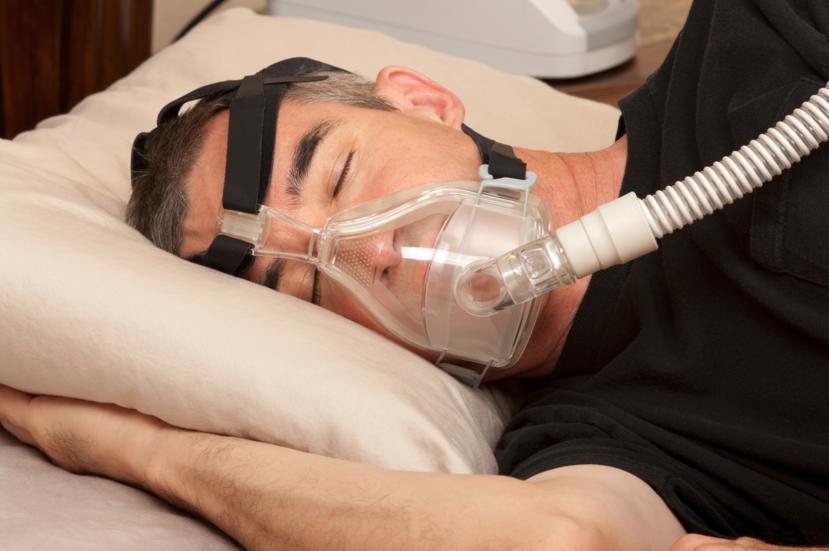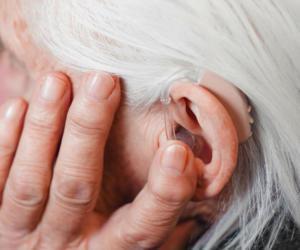Researchers Use Tongue Ultrasound to Direct Treatment of Sleep Apnea

Obstructive sleep apnea is a medical condition that is characterized by pauses in breathing. The affected patient finds it difficult to breathe because the muscles of inhalation stop moving and the volume of the lungs remains the same. This is due to the accumulation of CO2 in the blood and a high deficiency of oxygen. The excess CO2 diffused into the blood causes the pH level of the blood to drop, and caused the blood to be slightly more acidic but this would be discussed later.
The severity of the medical condition depends on how much the airways are actually blocked, which may not lead to a total blockage. Now, this should not be mistaken to be common in all obstructive sleep apnea patients.
The following are the major causes of apnea:
- Voluntarily blocking the airways
- Taking opiates and tryptamine in excess
- Mechanical causes such as choking or from strangulation
- As a result of a neurological disease or trauma
Obstructive sleep apnea is noticed, most especially, in times of heightened emotions such as intense crying or supplementing the Valsalva maneuver during laughter. The voluntary method of getting obstructive sleep apnea is by closing the vocal cords, and keeping the mouth closed and blocking the nasal system at the same time. Now, we should know that the human body can’t store a lot of oxygen at once. This, along with the inhibited breathing caused by sleep apnea, would lead to a very severe deficiency of oxygen in the blood circulation. This excessive shortage of oxygen can cause a permanent damage to the brain, even just from a short time of three minutes, and it can also lead to death if it occurs for a longer period of time unless oxygen is taken into the body.
But other cases such as hypothermia, hyperbaric oxygenation, extracorporeal membrane oxygenation, or apneic oxygenation might occur in an individual for a long period of time and might not lead to severe consequences.
It is a normal phenomenon that untrained persons can’t sustain voluntary apnea (holding ones breath) for more than a minute or two. This is because the person would definitely return back to the normal breathing pattern in order to restore the oxygen and CO2 balance in the blood stream. In this scenario, the amount of oxygen inhaled and stored in the lungs is adequate for the amount of time needed to sustain the apnea without resulting in some side effects. After inhaling a large amount of air in the lungs, the lungs begin to absorb the oxygen gradually. Here, the lungs begin to collapse and CO2 begins to form. The body absorbs the oxygen stored and begins to produce CO2 in the lungs.
This CO2i s not allowed to escape via the nose or mouth, and this causes a change in the pH of the blood and an increase in CO2 tension in the lungs. At this point, the CO2 begins to enter the blood and the person automatically lets the stored CO2 out in order to restore the oxygen and CO2 balance in the blood back to normal. In any other involuntary apnea, the case is severe. It cannot be overcome voluntarily, as the brain does not know how to send signals to the respiratory muscles to regulate or restore the respiration. This causes the CO2 in the lungs to diffuse into the blood, more and more CO2 accumulates into the blood and displaces the oxygen in the blood. This accumulation of CO2 also displaces other gases in the blood and enters into the tissues, resulting in respiratory acidosis.
Research has been carried out to correct this disease and today, people suffering from the obstructive sleep apnea can now be assessed by ultrasound images of the tongue that are captured when the patient performs simple breathing exercises to treat the disease.
Taiwanese Study and Their Tongue Ultrasound
A study was carried out by some Taiwanese researchers, and they demonstrated how useful the ultrasound tongue testing was in treatment techniques. These researchers, from both the National Cheng Kung University and Fu-Jen Catholic University, discovered and developed a dedicated tracking algorithm that would be used to monitor the movements in the base of the tongue of patients with the disease. They call this algorithm the modified optical flow-based method, and they also stated how accurate the procedure is and explained its use with the ultrasound image sequences.
The research was carried out on twenty-one obstructive sleep apnea patients and nine volunteers. Each of the participants performed the Muller Maneuver. During the exercise, the contour changes of the base of the tongue was simulated with the negative pharyngeal airway pressure that is usually experienced in sleep apnea. This research was verified with a lot of phantom and synthetic data, and this added credibility to the performance of their method. The image sequences of the ultrasound test was obtained during a 10 second transition from the normal pattern of breathing to the muller maneuver exercise. It was measured with a method the research team called the modified optical flow-based method. The effectiveness of their algorithm method was also evaluated by calculating the displacement error estimated.
It was noted that the tongue area changes had a percentage of 2.2 percent in the disease free volunteers and 1.3 percent in the obstructive sleep apnea patients. From the results of the study, it was noted that the modified optical flow-based method had more accurate results than the other tests carried out that was used for comparison. This other method is known as the normalized cross correlation method.
The authors stated that they found out that the ultrasound imaging tests was more suitable for assessing the behavior of the pharyngeal airway in obstructive sleep apnea patients. It was quoted, “We found that quantitative assessment of tongue motion by ultrasound imaging is suitable for evaluating the pharyngeal airway behavior in obstructive sleep apnea patients with minimal invasiveness and easy accessibility.” They also stated that, “We confirm the present method as an alternative clinical modality for simple and tolerable evaluation of the potential patterns and severity of upper airway obstructions in patients with OSA while they are awake.”













